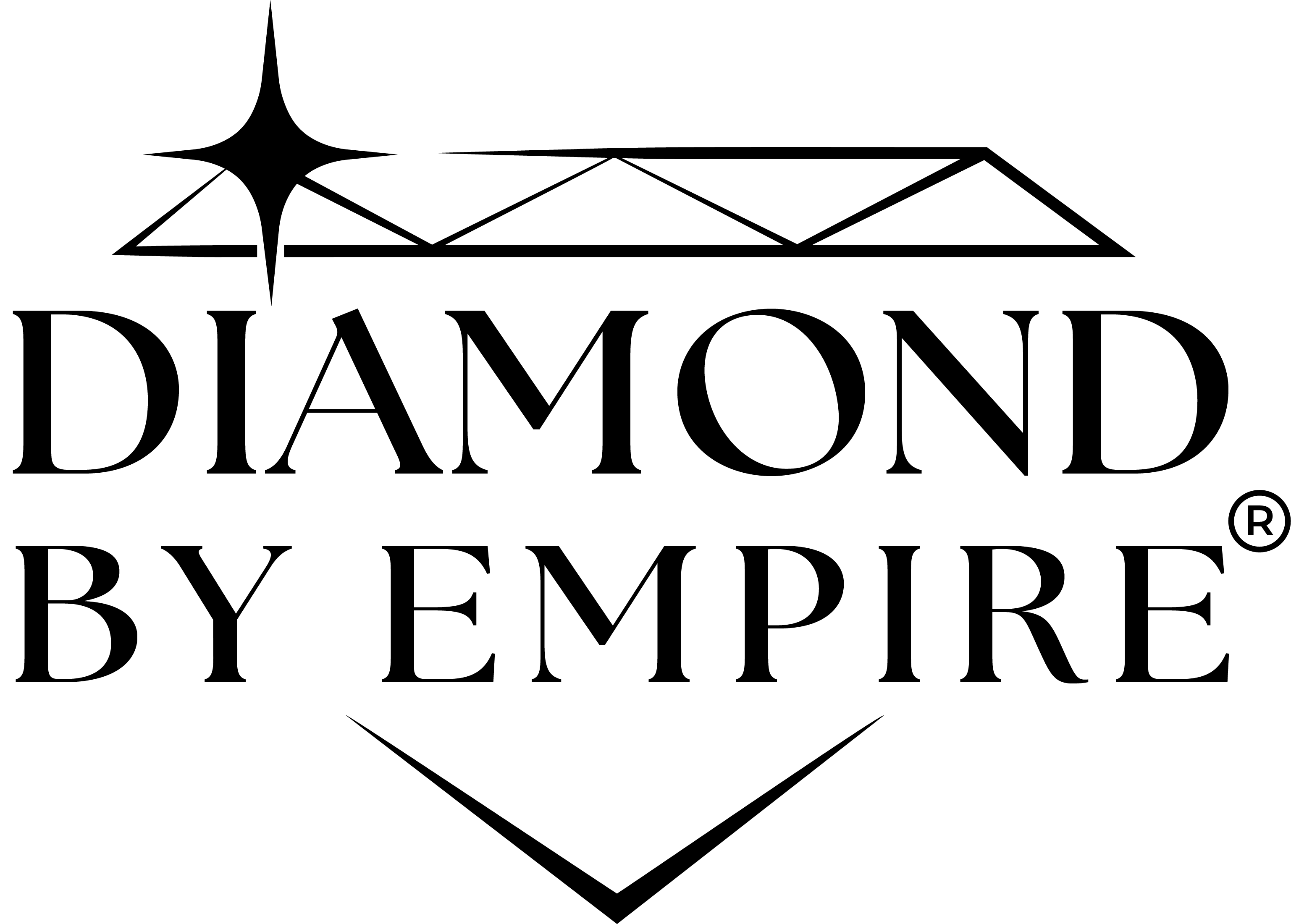OUR MISSION
Empowering Your Dreams, Crafting Excellence
At Diamonds by Empire, our mission is to empower individuals and businesses by turning their dreams into reality through the art of crafting excellence. We are dedicated to providing topquality casting services that exceed expectations and leave a lasting impression.
We believe that every project tells a unique story, and we strive to be the catalyst that brings those stories to life. Whether you’re a jewelry designer seeking exquisite metalwork or a creative mind looking to materialize your vision, we are here to collaborate, innovate, and create remarkable pieces that inspire.
Our commitment to excellence is unwavering. With our state-ofthe-art facilities and a team of highly skilled artisans, we ensure meticulous attention to detail in every casting we produce. We embrace cutting-edge technology and combine it with timehonored craftsmanship, resulting in unparalleled precision and quality.
Customer satisfaction is at the core of everything we do. We value open communication, personalized service, and a deep understanding of our clients’ needs. Our dedicated team Works closely with you, offering guidance and expertise throughout the entire casting process, from design consultation to the final masterpiece.
Moreover, we are committed to sustainability and ethical practices. We prioritize responsible sourcing and environmentally friendly manufacturing methods, striving to minimize our ecological footprint and contribute positively to the industry.
At Diamonds by Empire, we believe that the possibilities are limitless. Our mission is to be your trusted partner in bringing your creative visions to life, delivering exceptional craftsmanship and unmatched dedication every step of the way. Together, let’s forge a legacy of excellence and turn your dreams into timeless treasures.
THE 4Cs
Color, Clarity, Carat Weight, and Cut
The 4Cs stand for color, clarity, carat weight, and cut, and they make up a grading system that determines the quality and price of a diamond.
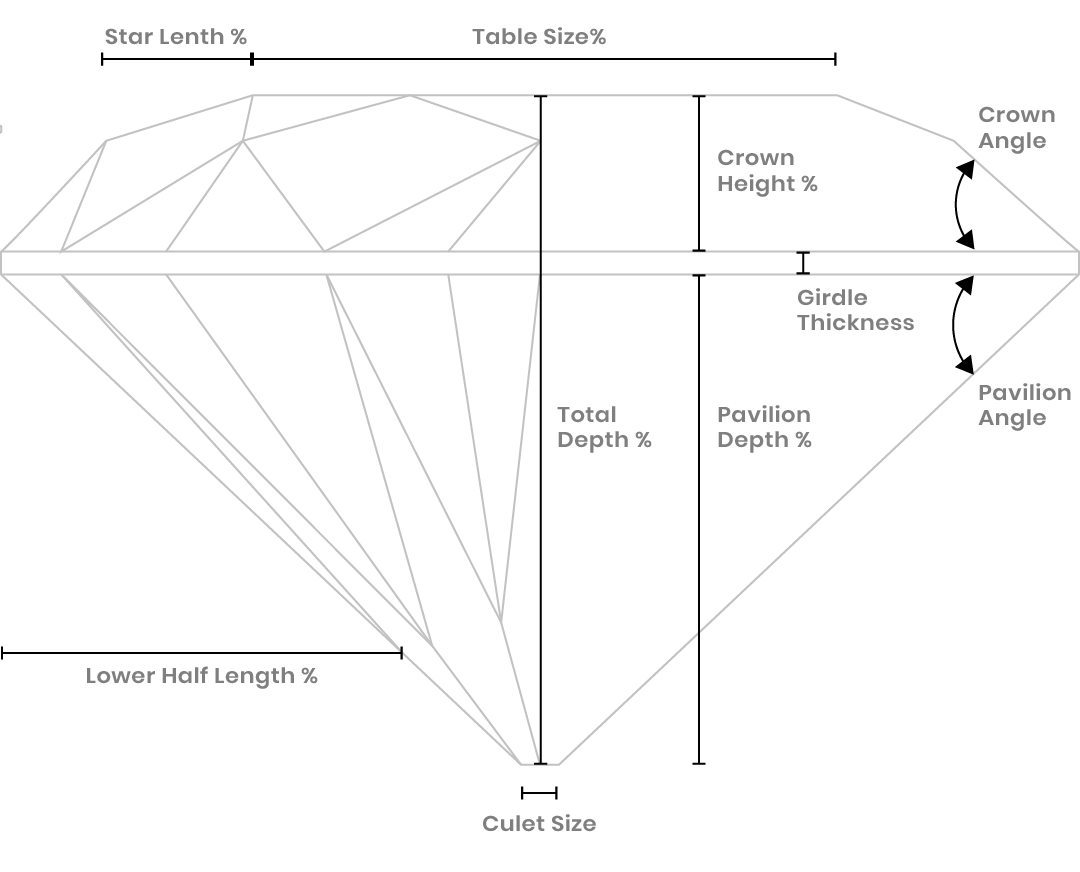
According to gemologist and jeweler Andrew Mills, it’s important to note that the 4Cs grading system is a guideline, rather than a “good” or “bad” scale.
“The first thing to keep in mind when reading about the 4Cs is that there is no right answer, and a lot of the information out there can be pretty misleading on what is required in purchasing a diamond,” says Mills. “What really matters is what YOU think of the diamond and its natural appearance.”
Even if a diamond hits the top of every scale, it will naturally cost the most, but that doesn’t necessarily make it any more beautiful than a more affordable diamond. And, all of the 4Cs are factored together, not just individually, when weighing the diamond’s value. Essentially, the idea that a diamond has to be “perfect” across all 4Cs is a misconception—there is no “correct” set of diamond specs.

To make your diamond hunting process loads easier, we broke down the specifics of the engagement ring 4Cs in no particular order, along with helpful tips on how to make the most of each component financially.
A diamond can have gorgeous color, flawless clarity, and a large carat weight, yet still be unattractive and undesirable—making cut the most important component of the 4Cs. Ahead, Parikh shares everything you need to know about diamond cut, from the grading scale to the best cuts to choose.
Carat
Cut
Clarity
Color
4Cs: CARAT
When you start shopping for a diamond engagement ring, you’ll quickly become accustomed to hearing about the 4Cs: cut, color, clarity, and carat weight. While these all define important aspects of a diamond, the carat weight is one in particular that many shoppers pay close attention to.
To learn more about diamond carat and how it affects your jewelry purchase, we spoke to two experts: Hannah Florman and Jen Oliak, who taught us everything about how important carat really is, how it impacts the cost of your diamond, and how to get the best deal for a larger size.
The importance of diamond carat is mostly subjective, but what diamond carat really influences is the price of the stone. According to Oliak, “carat weight is often the most important aspect of the 4Cs used in determining the price of a diamond.”
That said, diamond carat is really as important as you want it to be. “If you prioritize a very large stone, carat weight may be at the top of your must-have list,” Florman says. Those who don’t feel that a larger stone is a necessity may find that other aspects of the diamond are more important than the carat weight.
In general, the higher the carat is, the higher the diamond price is. “If all else is equal (cut, clarity, and color), a diamond’s price increases with diamond carat weight because larger diamonds are more rare and more desirable,” Florman says. “However, two diamonds of equal carat weight can have very different values depending on the other three Cs.”
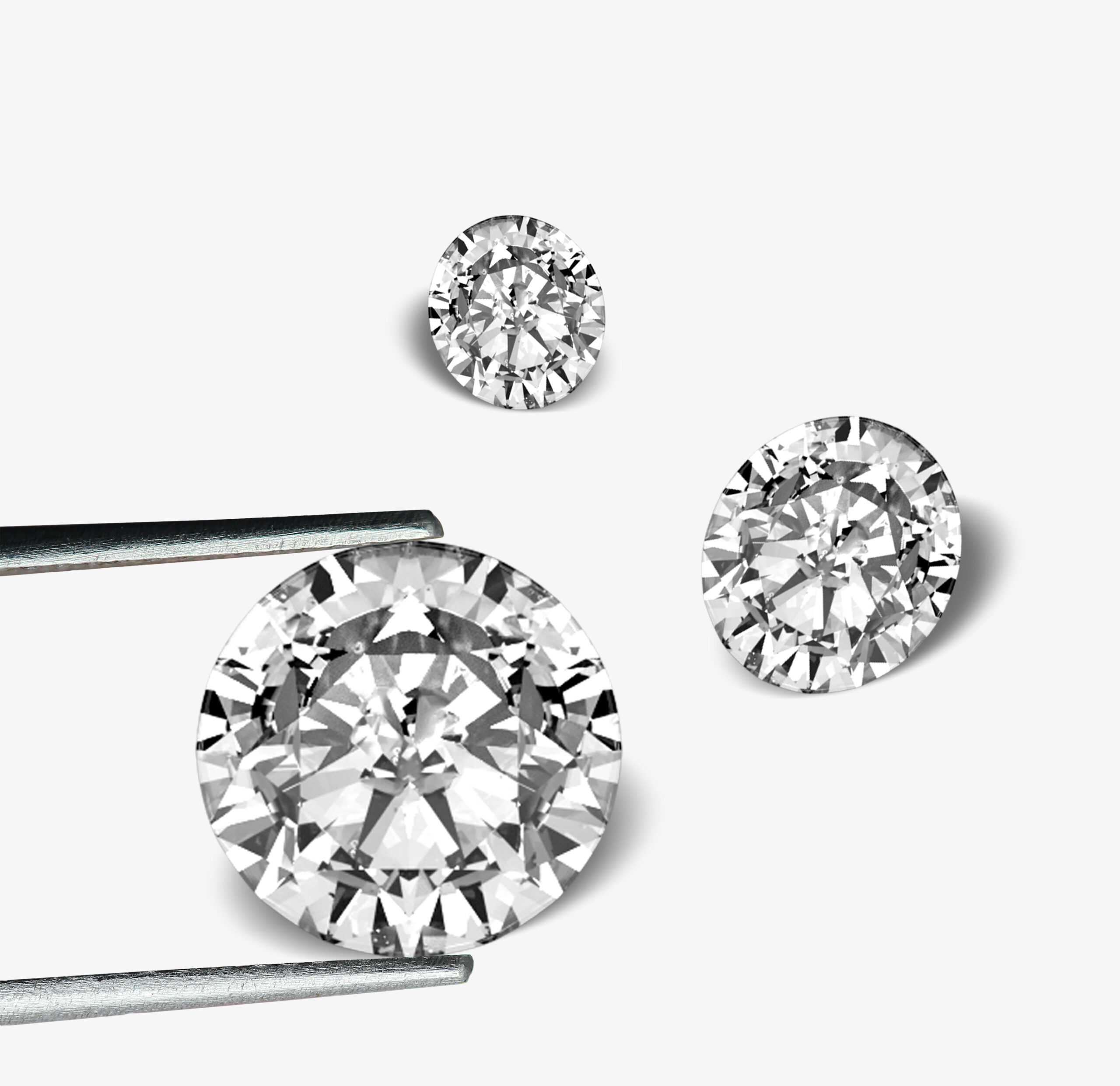
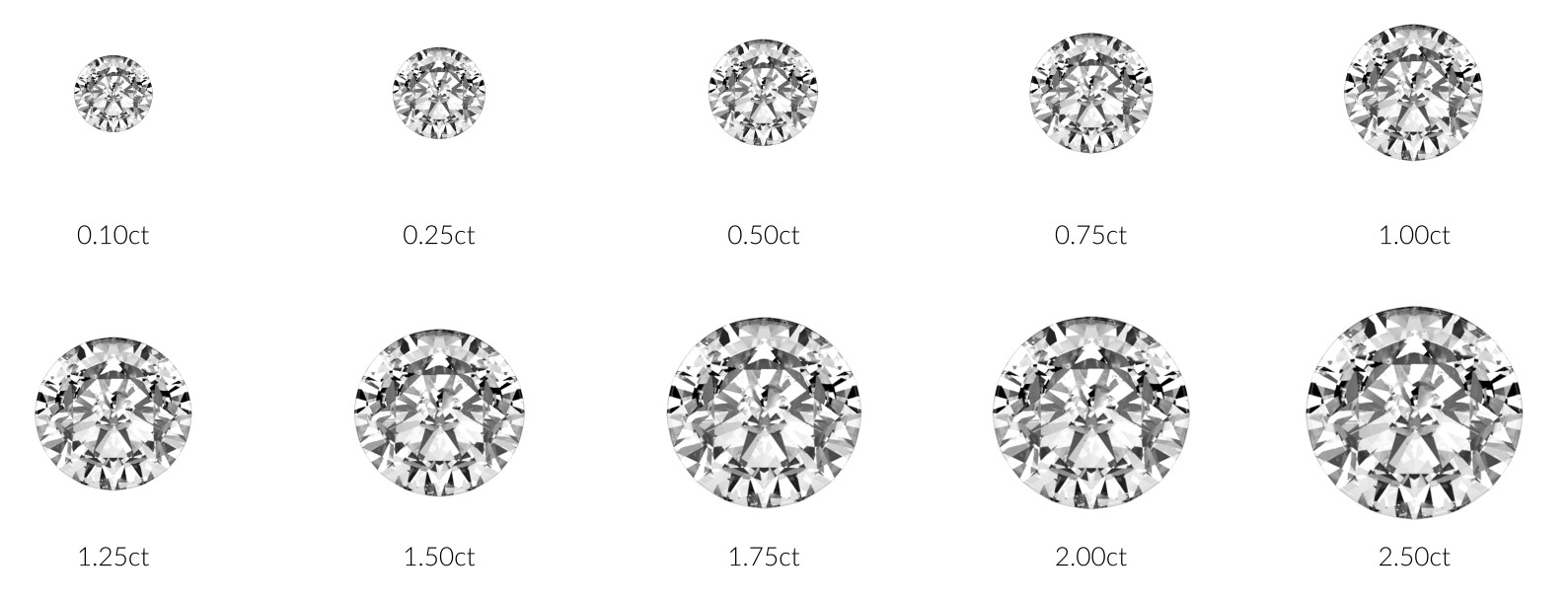
In other words, diamond carat definitely has a significant impact on the cost of a diamond, but it is not the only determining factor in price. You could have a diamond that has a high carat weight, but if the clarity isn’t fantastic and the color is less than great, the price will go down.
Many people assume that diamond carat equals diamond size, which isn’t true. The carat weight refers to the mass of the diamond, and the cut can really influence the size more than the carat.
“Believe it or not, a higher carat diamond with a poor cut can appear smaller than a smaller carat diamond with a better cut,” Florman says. “For example, a one-carat round diamond is not half the size of a two-carat diamond. A one-carat round will average 6.4mm in diameter, and a two-carat will average 8mm.” This is why Florman stresses the importance of not discounting smaller carat weight.
Jewelers use scales to measure diamond carat, and the process is very simple. “All you need is a highly calibrated scale capable of measuring very small weights,” Oliak says. “Organizations like the GIA or AGS will have very accurate scales.”

Jewelers typically use a point system when discussing carat weight, and it’s not something that is often expressed to buyers. Still, it’s helpful to know if it comes up. “Within the diamond industry, you might hear people refer to a stone as having x-number of points or an x point,” Florman explains. “If you think of a carat weight as equal to 100, each point is .01 of a carat. So a 90 pointer is another way of referring to a .90 carat diamond.”
As Oliak explains, it’s just a way to express diamond weight for very small diamonds. As a buyer, what you’re more likely to hear is that a stone is, for example, one carat, two carats, or three carats.
4Cs: CUT
When a diamond catches your eye, you will probably notice its sparkle first. There is only one factor that contributes to the twinkle of a gem: diamond cut.
But before diving into all things diamond cut, understanding the anatomy of a diamond is critical—and jeweler Tanya Parikh has the perfect analogy by comparing diamonds to a slice of pizza.
“Picture this! The crust is your crown. The girdle is the thin area that attaches the top to bottom, and the cheese is the pavilion of the diamond,” she describes to Brides. “In relation to the crust and cheese ratio, the crown and pavilion of a diamond must be proportional to allow for that great light return and sparkle.”
She adds, “If the proportions are correct, the light—even in the most dimly lit room—will play inside the stone and come back to the eye in the form of sparkle. That sparkle and fire in a diamond are what makes it very attractive.”
A diamond can have gorgeous color, flawless clarity, and a large carat weight, yet still be unattractive and undesirable—making cut the most important component of the 4Cs. Ahead, Parikh shares everything you need to know about diamond cut, from the grading scale to the best cuts to choose.
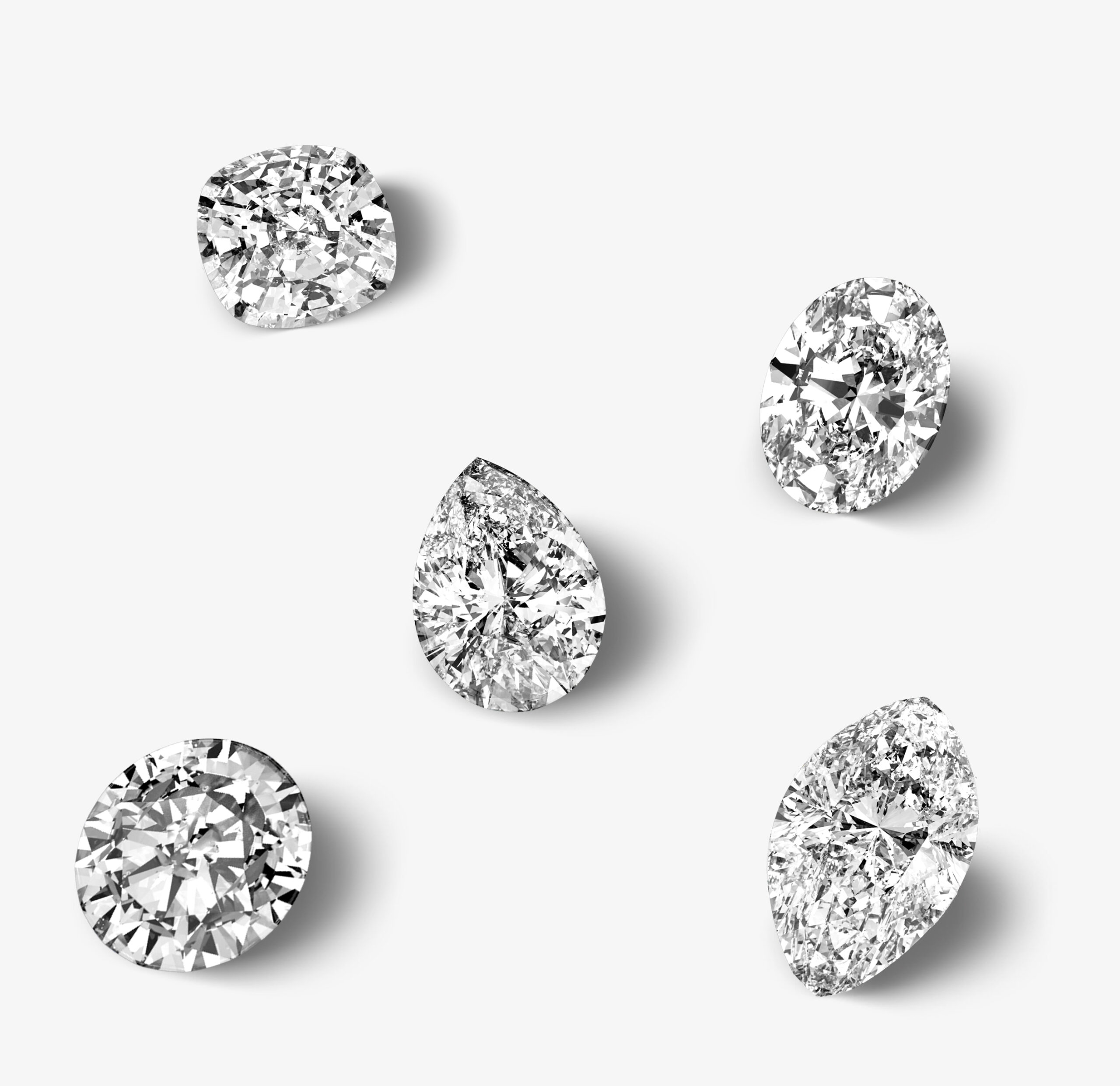
There are two main components that determine the quality of a diamond cut. “The first is the actual material that is being cut. Being a natural product, diamond rough material will vary from stone to stone. That being combined with the skills of a master cutter will unlock the life in the stone and give it its cut quality.” The cut of a diamond is then given one of five gradings: excellent, very good, good, fair, and poor.

Excellent: These diamonds are pristinely cut with the correct proportions to maximize the fire, sparkle, and brilliance in the diamond.
Very Good: Diamonds with this grade are beautifully cut. They are very similar to excellent-grade diamonds, although slightly less quality.
Good: These diamonds are cut in such a way that gives some sparkle to the stone, but may be disproportionate in some areas. Because of these inconsistencies, Parikh cautions that she would never sell a diamond with a good cut grade for an engagement ring.
Fair: Light easily exits through the bottom and sides of a fair grade diamond. For this reason, fair cut diamonds are not ideal for center stones but could be suitable for smaller side stones on a ring.
Poor: As the name of this rating suggests, poor cut diamonds are the least favorable—and luckily, the least common. Parikh shares, “As a diamond dealer for over a decade I do not think I have ever seen a diamond with a poor cut grade. Often times the poor cut grades can be found in small melee diamonds that are noncertified because no grade is better than a bad grade!”
4Cs: CLARITY
If you’ve dabbled with the idea of a diamond engagement ring, you’re no doubt well-acquainted with the 4Cs: cut, carat, color, and clarity. The latter, however, is like a diamond’s fingerprint— making each and every gemstone unique.
To learn more about diamond clarity, we consulted experts Caylee Kozak of Gemist and Debbie Azar of Gemological Science International. Read on to understand the diamond clarity chart, how clarity impacts cost, and more.
Per Kozak, when you buy a diamond from a certified dealer you’ll receive a report that indicates the size, shape, location, and number of inclusions in the stone. “You commonly hear these referred to as ‘flaws,'” she says. “In a diamond, these inclusions could be anything from nearly-invisible specs, clouds of minuscule crystals, wispy feather-like fractures, or larger formations that appear grey or even black.”
There are a few ways to think about your diamond’s inclusions. For some, it’s a flaw that could potentially take away from a gemstone’s sparkle. “Diamonds with many visible inclusions can’t reflect light the same way a cleaner stone can,” Kozak shares. It’s also possible for an inclusion to breach the surface, which she explains could impact the diamond’s durability. “This can allow the diamond to chip or fracture more easily.”

On the other hand, many experts are fascinated with inclusions. “Gemologists love inclusions because they make every diamond unique and help to identify it,” Azar adds. “Because diamonds are minerals formed hundreds of miles below the surface of the earth that undergo immense heat and pressure, it’s inevitable that they trap other minerals and parts of the earth in them as they form. These minerals become telltale birthmarks of the diamond’s origin.”
In 1953, Azar shares, the jewelry industry adopted an 11-factor scale for evaluating a diamond’s clarity. From least included, to most included, the measurements are: Flawless (Fl), Internally Flawless (IF), Very Very Slightly Included 1 (VVS1), Very Very Slightly Included 2 (VVS2), Very Slightly Included 1 (VS1), Very Slightly Included 2 (VS2), Slightly Included 1 (SI1), Slightly Included 2 (SI2), Included 1 (I1), Included 2 (I2), and Included 3 (I3).
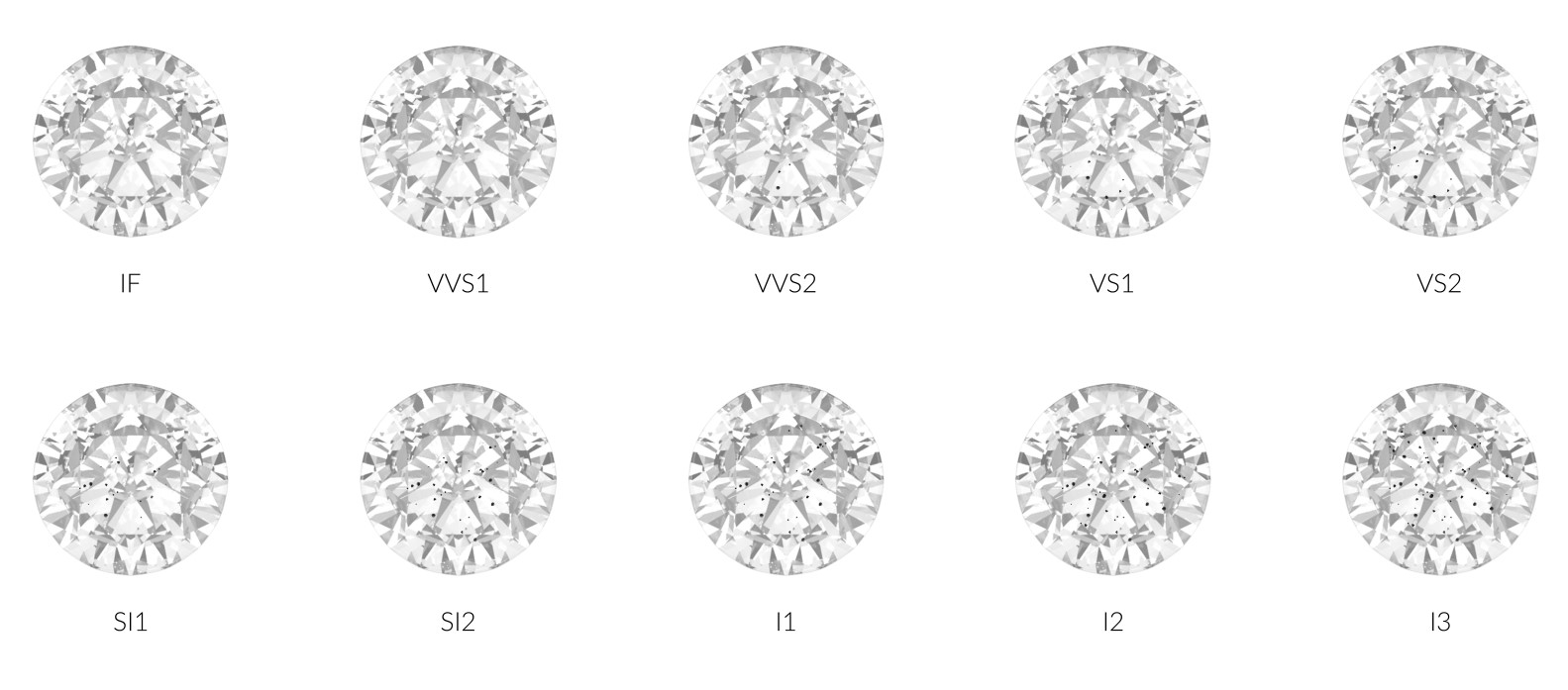
“The diamond clarity chart breaks down how visible inclusions are with 10x magnification and with the unaided eye, starting with no inclusions being visible even under 10x magnification for the Fl and IF clarities, and ending with inclusions being visible to the unaided in the I1, I2, and I3 categories,” Azar says.
When assessing a diamond’s clarity, you may notice terms such as minute, minor, or noticeable, she adds. “VVS diamonds have minute inclusions that are extremely difficult to find under 10x magnification. VS diamonds have inclusions that are difficult to find under 10x magnification. SI diamonds have inclusions that are noticeable under 10x magnification but not visible to the unaided eye,” Azar adds. “Finally, I clarity diamonds have inclusions visible to the unaided eye.”

Kozak explains that clarity in diamonds impacts the cost in two primary ways, the first of which being that diamonds that are almost entirely free of inclusions are impeccably rare, and are priced much higher. “Secondly, clarity matters more in step-cut diamonds like emerald and Asscher cuts because their wide facets create a sort of window-mirror effect and inclusions are much more visible,” Kozak says. “Brilliant-cut diamonds have many more facets that help to hide inclusions.”
Azar also explains that clarity’s impact on cost is intrinsically tied to the diamond’s other 3Cs (carat, color, and cut). “While the clarity can significantly impact a diamond’s cost, many inclusions typically cannot be seen by the naked or unaided eye,” she says. “With regard to clarity alone, fewer inclusions in a diamond will typically have a higher price, but again, the price is based on all the 4Cs as opposed to one single measurement.”
On the technical side of clarity, gemologists turn to impressive technology to determine a diamond’s grade. “They use a binocular microscope to find the inclusions, and then use a 10-magnification loupe to determine the final clarity grade,” Azar says. “Diamonds are judged at 10-power magnification, which means the lens magnifies the diamond to look ten times larger than actual size.”
Because the types of inclusions that can occur are vast and every diamond is unique, Azar encourages an appreciation of your stone’s individuality. “From included minerals such as garnet, olivine (peridot), and other diamonds, to twinning of the diamond crystal (called twinning wisps), and even star-shaped clouds, diamond inclusions are a source of fascination and beauty,” Azar says. “So, when you look at the inclusions in your diamond, remember they are a birthmark of the diamond’s origin, born billions of years ago deep in the earth.”
4Cs: COLOR
Before you go ring shopping, it is crucial to understand the 4Cs, particularly, diamond color. Most diamonds have small traces of color within their crystal structures. And though it may not garner as much attention as carat or cut, a diamond’s color impacts the price and value of the diamond in a noteworthy way.
Colorless diamonds, often referred to as “pure,” are very rare and expensive, which is why many people opt for diamonds that show little to no color. Thankfully, even if your diamond does have color, it doesn’t necessarily mean you’ll be able to tell. “It’s important to note that color is often hard to assess with the naked eye and without gemological training,” explains gemologist Anubh Shah, co-founder of With Clarity.
But diamond color impacts more than just the look of your engagement ring. From understanding the color chart to knowing how it may impact your budget, here is everything to know about diamond color.
“When the color scale was developed, the GIA intentionally skipped the letters A, B, and C as grades, choosing instead to begin the scale at D,” Kwiat CEO Greg Kwiat explains of the unique D to Z scale. “This was done to differentiate the diamond grading system from other existing uses of the alphabet as a grading scale.”
The letter scale is broken down into five subcategories: colorless (D-F), near colorless (G-J), faint (K-M), very light (N-R), and light (S-Z). “Diamonds that fall beyond Z on the color scale are considered fancy colored diamonds, which actually are the rarest to find in nature and are extraordinarily expensive,” Shah adds.
Most couples search for G, H, I, and J grade diamonds, which are near colorless. Shah continues, “This provides a good balance of budget and visually beautiful diamonds. While color can be slightly visible with a J color diamond, some couples opt for it as it allows them to maximize on other factors like size and cut.”
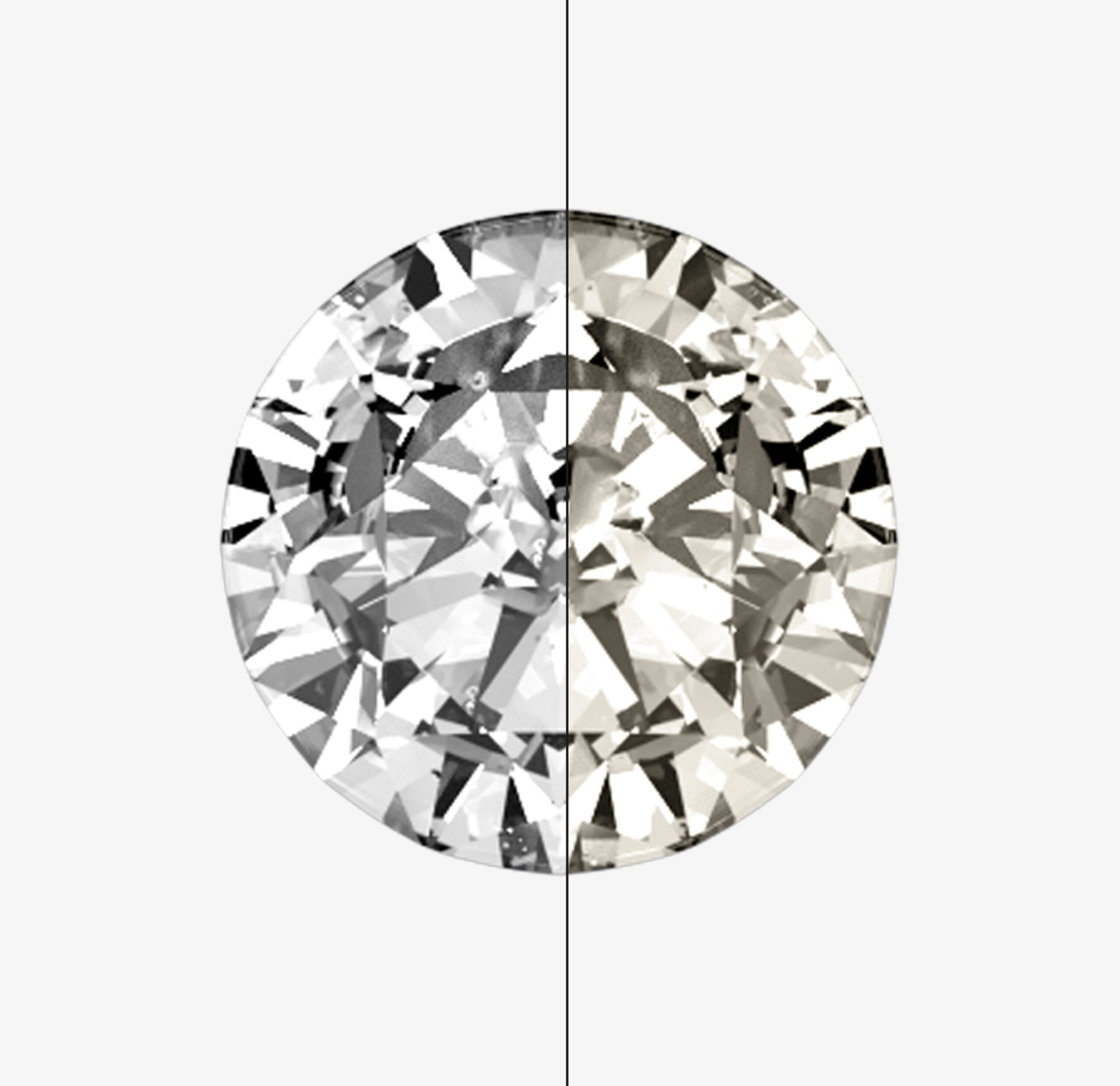
However, the difference from one grade to the next is often imperceivable. According to Kwiat, “Many people don’t see noticeable differences in diamonds that are one to two color grades apart. In the range from D to J, diamonds will most often still appear ‘white’ when face-up in jewelry.”
Diamonds are also judged quite scrupulously on the color scale. Although they are worn face-up on engagement rings, diamonds are graded face-down. Because of this, fine jeweler Thelma West says, “Diamonds that are well-cut appear whiter than their real color when worn in a piece of jewelry.”

“The diamond clarity chart breaks down how visible inclusions are with 10x magnification and with the unaided eye, starting with no inclusions being visible even under 10x magnification for the Fl and IF clarities, and ending with inclusions being visible to the unaided in the I1, I2, and I3 categories,” Azar says.
When assessing a diamond’s clarity, you may notice terms such as minute, minor, or noticeable, she adds. “VVS diamonds have minute inclusions that are extremely difficult to find under 10x magnification. VS diamonds have inclusions that are difficult to find under 10x magnification. SI diamonds have inclusions that are noticeable under 10x magnification but not visible to the unaided eye,” Azar adds. “Finally, I clarity diamonds have inclusions visible to the unaided eye.”
Because colorless diamonds are extremely rare, they’re usually the most expensive. As you move down the scale and the tint becomes more noticeable, the price also goes down. “This changes, however, once we hit the fancy color grades,” West explains. “Their rare occurrence carries a lot of weight. Red, blue, pink, and green are incredibly special for that reason. We then also consider the depth of hues and saturation of a specific fancy color in the stone.”

For Kwiat, it’s not always about seeking the highest level of color, either. “In considering the budget, size, color, and clarity, you may opt for a diamond in the FGHI range, which can be a sweet spot for balancing the trade-offs,” he notes.
Regardless of a diamond’s color grade, some diamond cuts highlight color more than others. Kwiat explains, “Because of the different styles and nuances of diamond cutting, the various diamond shapes will show color differently. For example, round diamonds, emerald cuts, and Ashokas face up quite white even as you move into the KL color range. On the other hand, diamond shapes like radiant cuts and ovals tend to show color more readily and may start to appear slightly tinted in the HIJ range.”
While it can be tempting to focus on the whitest and brightest diamond possible, West encourages you to admire every color. “It’s fun finding new and interesting ways to set a low color diamond in a way that makes it stand out,” she says. “It helps that people are more openminded to the wide range of tints and hues, understanding that there are beautiful stones to be discovered. Diamonds in the Y-Z range for example can be set to look fancy. The possibilities are endless.”
Lab-Grown vs. Natural Diamonds
WHAT ARE LAB GROWN DIAMONDS?
Lab-grown diamonds, also known as man-made or created diamonds, are produced in a laboratory environment without the negative environmental or human impacts associated with mining.
Physically, lab-grown diamonds are indistinguishable from mined diamonds, with the only distinction being their origin.
Lab-created diamonds undergo the same growth process as mined diamonds. They begin as carbon atoms subjected to high temperatures and intense pressure, bonding together to form a crystalline lattice structure. Once fully developed, they are cut and polished to reveal their optimal brilliance. Similar to mined diamonds, lab-grown diamonds are available in various color and clarity grades.
LAB-GROWN VS NATURAL DIAMONDS
Formation Process:
Natural diamonds are carbon crystals that form naturally underground over hundreds of millions of years. They are created through the crystallization of carbon under high pressure and high temperature, typically in volcanic regions. Lab-grown diamonds, on the other hand, are produced in a controlled laboratory environment. This process involves chemical reactions that simulate the natural formation of diamonds but at an accelerated rate.
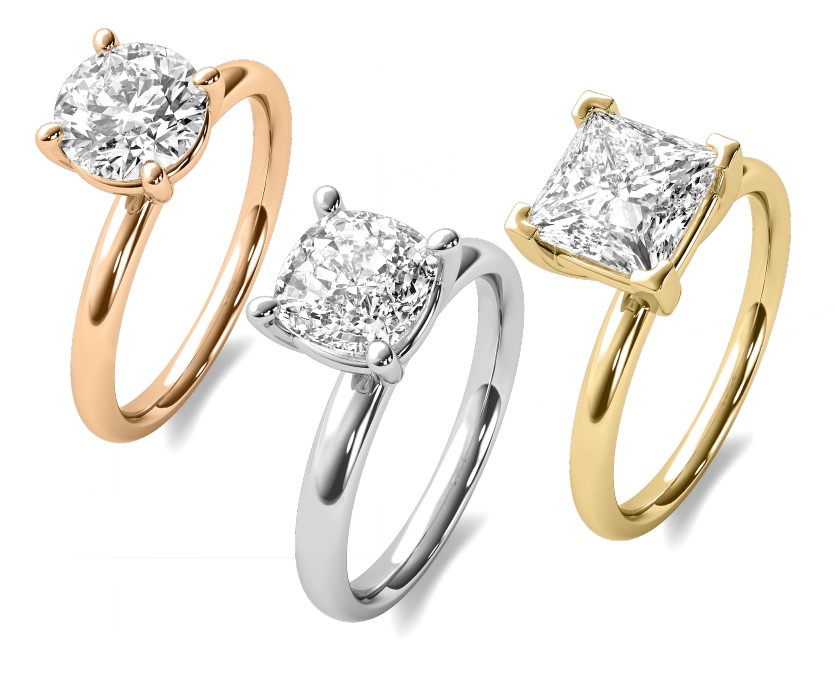
Price:
Lab-grown diamonds are generally more affordable compared to natural diamonds. This is because lab-grown diamonds can be produced more easily and quickly than their naturally occurring counterparts. Lab-grown diamonds offer a more economical option that can replace naturally formed diamonds, which can command higher prices due to their rarity and supply-demand dynamics.
Quality and Appearance:
Both natural and lab-grown diamonds can possess the same physical and optical properties. Therefore, they can be difficult to distinguish with the naked eye or standard laboratory tests. However, some lab-grown diamonds may have fewer inclusions or color tints compared to naturally formed diamonds. This means that lab-grown diamonds can provide a more consistent appearance.
Sustainability:
Lab-grown diamonds are considered a more sustainable option compared to natural diamonds. Natural diamond mining can contribute to environmental impacts and depletion of underground resources. Lab-grown diamonds, on the other hand, reduce the demand for natural resources and have lower environmental effects.

